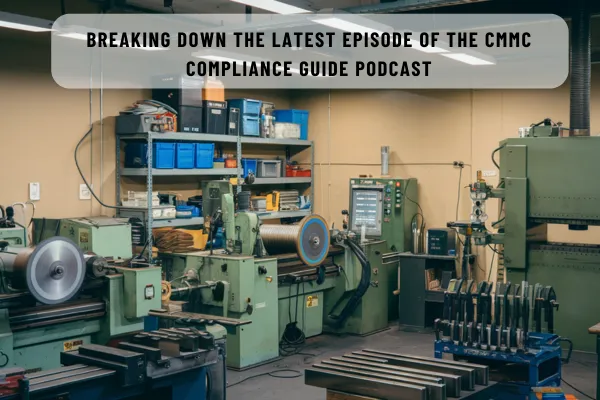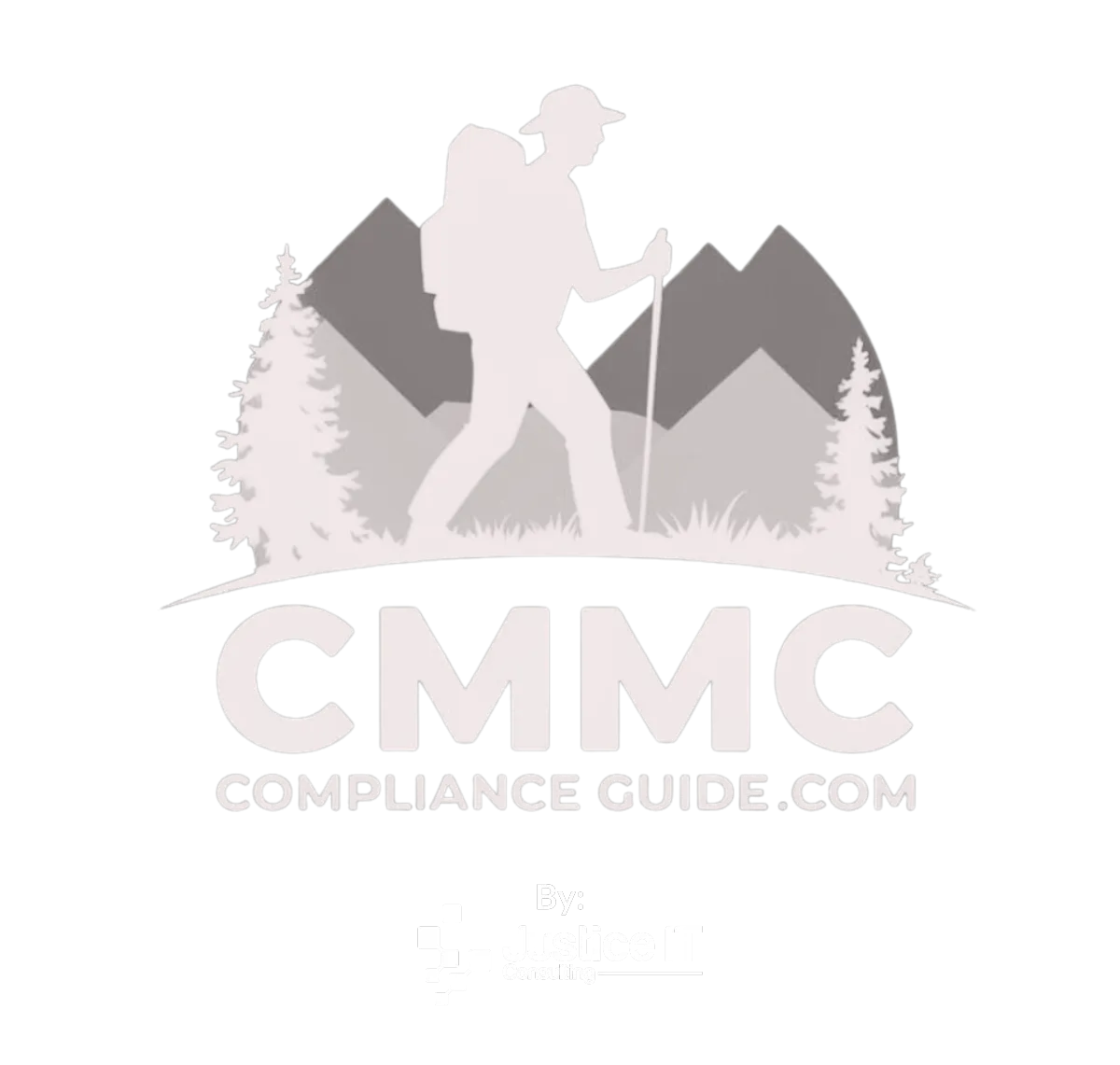
CMMC Compliance Guide Blog
Actionable insights, expert tips and compliance strategies to help defense contractors simplify their CMMC Requirements and secure contracts
Latest Editions

Breaking Down the Latest Episode of the CMMC Compliance Guide Podcast
In the latest episode of the CMMC Compliance Guide Podcast, Austin and Brooke from Justice IT Consulting delve into the complexities of CMMC compliance, discussing its implications for SMBs, the challenges it poses, and actionable steps to achieve compliance. This episode sheds light on the DoD's perspective and how businesses can position themselves for success in the defense supply chain.
1. The Core Debate: CMMC Mandate – Digital War or SMB Burden?
The Challenge for SMBs
Many SMBs view the CMMC mandate as an overwhelming and costly requirement. While the framework is intended to protect national security, smaller businesses often see it as a barrier that could drive them out of the defense contracting ecosystem.
Brooke’s Perspective
Brooke emphasized that while the CMMC framework is achievable, it requires significant investment, especially for smaller organizations. The cost per capita is much higher for SMBs than for larger enterprises, making it a heavier financial lift.
Austin’s Soapbox
Austin argued that the DoD is effectively fighting a "digital war" through compliance. He highlighted that the mandate aims to prevent intellectual property theft by nation-states like China and Russia, even if it places economic strain on SMBs.
2. Why CMMC Matters: Protecting National Security
The Bigger Picture
Brooke and Austin discussed how adversaries have historically stolen U.S. intellectual property, bypassing years of R&D and billions of dollars in investment. This theft undermines the technological advantage that the U.S. military relies upon.
Supply Chain Vulnerabilities
Smaller subcontractors, often seen as the weakest links in the defense supply chain, are prime targets for cyberattacks. By mandating compliance, the DoD aims to close these gaps and secure sensitive data.
3. The Cost of Compliance: Is It Worth It?
Breaking Down the Costs
Certification Costs: Initial certification can start at $100,000 or more, with assessments required every three years.
Recurring IT Costs: SMBs may need to invest $60,000 to $100,000 annually in IT services and projects to meet compliance standards.
Additional Projects: Upgrading infrastructure could add $10,000 to $100,000 or more, depending on the scope.
ROI Considerations
SMBs must evaluate whether the revenue from defense contracts justifies these costs. Brooke advised analyzing profit margins and future opportunities to make an informed decision.
4. Practical Steps to Achieve Compliance
Step 1: Understand Your Data
Identify Controlled Unclassified Information (CUI) and Federal Contract Information (FCI).
Map how CUI flows through your systems using a data flow diagram.
Step 2: Define Your Scope
Clearly outline which systems and processes are in scope for compliance.
Build a strong narrative for assessors to justify your scoping decisions.
Step 3: Implement the Controls
Address the 110 controls and 320 objectives outlined in NIST 800-171.
Ensure you have robust documentation and proof for each control.
Step 4: Invest in Tools
Utilize a GRC (Governance, Risk, and Compliance) platform like FutureFeed to streamline compliance efforts.
5. Why Waiting Is Not an Option
The Freight Train of Compliance
Austin stressed that compliance is inevitable. Prime contractors are already pushing their subcontractors to achieve compliance ahead of government deadlines.
False Claims Act Risks
Failing to comply or misrepresenting compliance could result in severe penalties, including fines and imprisonment, under the False Claims Act.
6. Leveraging Compliance as a Competitive Advantage
Marketing Opportunity
SMBs that achieve full compliance can use it as a selling point to secure more contracts. Being “green” in a prime contractor’s system (i.e., scoring 110 on SPRS) can position businesses to win contracts more easily.
7. The Human Element: A Call to Action
Assess Your Risk
Audit your current DoD-related revenue.
Evaluate how many times primes have inquired about compliance.
Prepare for the Future
Decide whether to invest in compliance or pivot to non-defense work.
Understand that being unprepared could lead to significant revenue loss.

FREE Guide: "The Ultimate Aerospace Contractor's Guide to: DFARS, CMMC, and the DoD's (Latest) Cybersecurity Crackdown"
What Our Clients Say

© Copyright 2025. Justice IT Consulting LLC. All Rights Reserved.
